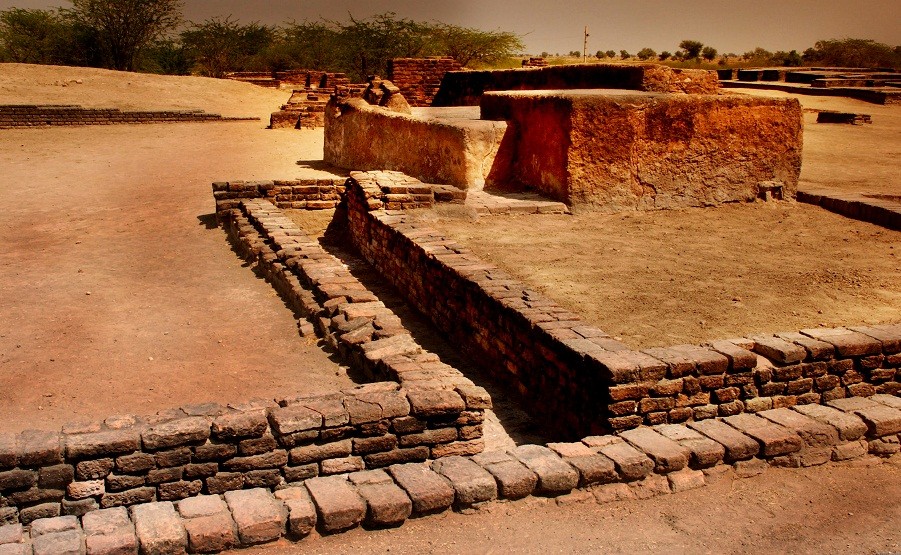Q. Write a note on the town planning of Harappan Civilization period.
Ans: The town planning of the Harappan Civilization was an impressive feat of urban organization and engineering that flourished around 3300 to 1300 BCE in the northwestern regions of the Indian subcontinent. The town planning of this ancient civilization is a testament to its advanced understanding of urban design and infrastructure.

Key Features of Harappan Town Planning:
- Grid Layout: Harappan cities were characterized by a well-organized grid layout with streets laid out in a north-south and east-west orientation. This grid pattern not only facilitated movement but also ensured efficient drainage through a complex network of interconnected drains and sewage systems.
- Standardization: The cities displayed a high degree of uniformity in their architecture and construction methods, suggesting centralized planning and administration. This standardization is evident in the construction materials, brick sizes, and proportions used in buildings.
- Citadels and Lower Towns: Many Harappan cities featured a distinct separation between the elevated citadel and the lower town. The citadel, often situated on higher ground, likely served as a fortified administrative and ceremonial center, while the lower town comprised residential and commercial areas.
- Advanced Drainage Systems: One of the most remarkable features of Harappan town planning was their advanced drainage system. The cities had well-designed covered drains, public baths, and waste disposal systems that contributed to sanitation and cleanliness.
- Public and Private Buildings: Harappan cities had an array of public structures, including granaries, assembly halls, and large public baths. Residential areas contained multi-roomed houses with courtyards, suggesting a well-organized urban lifestyle.
- Commercial and Industrial Zones: Archaeological evidence points to specialized zones for crafts and industries, including pottery, metalwork, and bead-making. These zones facilitated economic activities and trade.
- Trade Links: The town planning also highlights the civilization’s engagement in long-distance trade, as evidenced by the presence of dockyards and wharfs in some cities, indicating a connection to river-based trade networks.
Significance:
The sophisticated town planning of the Harappan Civilization underscores their advanced knowledge of urban infrastructure, engineering, and social organization. The emphasis on cleanliness, drainage, and organized living spaces highlights their concern for public health and sanitation. The standardization in construction techniques indicates a level of centralized control and governance, and the layout of the cities suggests an understanding of urban aesthetics and functionality.
Thanks for reading article on Write a note on the town planning of Harappan Civilization period.